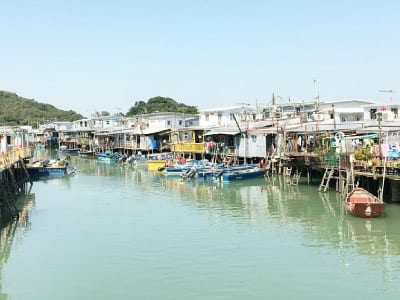This post is also available in:
![]() 繁體中文 (Chinese (Traditional))
繁體中文 (Chinese (Traditional)) ![]() 简体中文 (Chinese (Simplified))
简体中文 (Chinese (Simplified))
The History of Hong Kong and How It Came to Be a Thriving Cosmopolitan
 Sprawling skyscrapers and a bustling financial hub in Asia is Hong Kong as we know it today. The history of Hong Kong, however, goes far beyond that.
Sprawling skyscrapers and a bustling financial hub in Asia is Hong Kong as we know it today. The history of Hong Kong, however, goes far beyond that.
History of Hong Kong – Where It Began
Today, it is one of the most sought after business hubs in Asia by investors around the world. But this little island located off mainland China’s southern coast was once a very different scene. The history of Hong Kong began as a quiet backwater area where fishing communities and rural hamlets once thrived.
With its mountainous terrain, population in this area was sparse. It is only the remnants found in early rock carvings that show there were signs of human life in the Stone Age. Hong Kong’s history depicts it falling under the Chinese empire rule sometime between 206 BC and 220 AD. This was during the Han dynasty, and during this time, many mainland Han Chinese began setting up roots in Hong Kong.
When Trade Started to Boom
Because of its location, Hong Kong was always a sheltered main harbour. Hong Kong’s history reveals that trading ships frequently stopped here when supplies ran low. Back then, Hong Kong was the “maritime silk road”. The important link between Asia, the Middle East and Africa. Around the 7th century, Hong Kong started to flourish.
China began exporting silk, tea and porcelain. In return, it took everything from textiles to plants and even spices. With several outlying islands under its region, Hong Kong became a haven for Chinese pirates. Many of its 260 islands today remain uninhabited.
European Influence and British Rule
It wasn’t long before French, Portuguese and Dutch traders began arriving in Hong Kong around the 1500s. Macau today was set up by the Portuguese as a base of operations. The history of Hong Kong shows China began imposing restrictions on the Europeans in the 18th century. This was an attempt at trying to contain the European influence.
The opium trade from India to China was banned by an imperial edict because of the widespread addiction it caused. In 1840, the British attacked after its drug haul was seized by the Chinese authorities. This was the start of the First Opium War. Per the history of Hong Kong, the island was handed to the British in 1841 as an attempt at peace.
The British continued expanding their reach. By 1898, they had leased the New Territories area for 99 years. This was the beginning of change in Hong Kong’s history. Under the British, the island would grow to eventually become the financial and commercial hub we know today.
Modern-Day Hong Kong
Hong Kong continued to remain part of Britain’s empire. Once the New Territories lease expired in 1997, the whole city was returned to Chinese hands. It was only after lengthy negotiations that Hong Kong was finally declared a “Special Administrative Region” of China via the Sino-British declaration in 1984. The agreement stipulated that Hong Kong would be returned to China by 1997.
Hong Kong has undergone a lot of change since then. It’s energy and dynamic approach continues to remain strong, and it is the reason Hong Kong continues to thrive. If its history is anything to go by, this thriving cosmopolitan is not going to slow down anytime soon.


